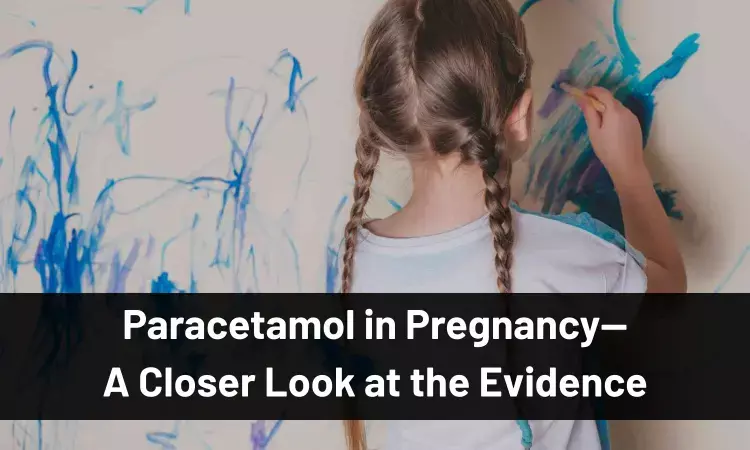- Home
- Medical news & Guidelines
- Anesthesiology
- Cardiology and CTVS
- Critical Care
- Dentistry
- Dermatology
- Diabetes and Endocrinology
- ENT
- Gastroenterology
- Medicine
- Nephrology
- Neurology
- Obstretics-Gynaecology
- Oncology
- Ophthalmology
- Orthopaedics
- Pediatrics-Neonatology
- Psychiatry
- Pulmonology
- Radiology
- Surgery
- Urology
- Laboratory Medicine
- Diet
- Nursing
- Paramedical
- Physiotherapy
- Health news
- Fact Check
- Bone Health Fact Check
- Brain Health Fact Check
- Cancer Related Fact Check
- Child Care Fact Check
- Dental and oral health fact check
- Diabetes and metabolic health fact check
- Diet and Nutrition Fact Check
- Eye and ENT Care Fact Check
- Fitness fact check
- Gut health fact check
- Heart health fact check
- Kidney health fact check
- Medical education fact check
- Men's health fact check
- Respiratory fact check
- Skin and hair care fact check
- Vaccine and Immunization fact check
- Women's health fact check
- AYUSH
- State News
- Andaman and Nicobar Islands
- Andhra Pradesh
- Arunachal Pradesh
- Assam
- Bihar
- Chandigarh
- Chattisgarh
- Dadra and Nagar Haveli
- Daman and Diu
- Delhi
- Goa
- Gujarat
- Haryana
- Himachal Pradesh
- Jammu & Kashmir
- Jharkhand
- Karnataka
- Kerala
- Ladakh
- Lakshadweep
- Madhya Pradesh
- Maharashtra
- Manipur
- Meghalaya
- Mizoram
- Nagaland
- Odisha
- Puducherry
- Punjab
- Rajasthan
- Sikkim
- Tamil Nadu
- Telangana
- Tripura
- Uttar Pradesh
- Uttrakhand
- West Bengal
- Medical Education
- Industry
Paracetamol Use in Pregnancy and Autism or ADHD: What are the Findings from the Latest Umbrella Review of Systematic Reviews?

Existing evidence does not clearly link maternal paracetamol (acetaminophen) use during pregnancy with autism spectrum disorder (autism) or attention deficit/hyperactivity disorder (ADHD) in offspring, according to a robust new umbrella review published in the November issue of the British Medical Journal (BMJ).
Safety Debate Rekindled Amid Public Health Advisories
Paracetamol (acetaminophen) is widely considered safe and is the recommended treatment for managing pain and fever during pregnancy worldwide. However, the perceived safety of the drug has been questioned following high-profile public health advisories.
In September 2025, an eminent American leader advised against using Tylenol (acetaminophen) during pregnancy, citing risks of autism in children exposed in utero, an announcement that caused considerable concern among pregnant women. Meanwhile, regulatory health agencies and expert bodies worldwide, including the UK’s Medicines and Healthcare Products Regulatory Agency, continued to reassure the public about the safety of paracetamol use during pregnancy.
Need for Umbrella Review
To date, numerous systematic reviews have synthesized the evidence on prenatal exposure to maternal paracetamol use and the risks of autism and ADHD in childhood, but these reviews often varied in methodological quality, findings, and interpretation due to being based largely on observational studies. Given this inconsistent evidence base, researchers sought a comprehensive evaluation to clarify the risks.
Rigorous Review of Existing Evidence
This umbrella review assessed the quality, biases, and validity of existing systematic reviews on maternal paracetamol use during pregnancy and the risk of autism or ADHD in offspring.
Researchers searched Medline, Embase, PsycINFO, and the Cochrane Database of Systematic Reviews, along with grey literature and reference lists, covering records from inception up to September 30, 2025. Nine systematic reviews comprising 40 primary studies met the inclusion criteria.
Quality of Evidence Found to Be Critically Low
The methodological quality of the reviews was assessed using AMSTAR 2 (A MeaSurement Tool to Assess Systematic Reviews). Confidence in findings ranged from low (two reviews) to critically low (seven reviews), reflecting substantial weaknesses such as lack of registered protocols, incomplete literature searches, and missing lists of excluded studies.
Additionally, there was a high overlap among the reviews (about 23%), indicating that most drew on the same underlying studies.
Associations Weaken After Adjusting for Family Factors
While most reviews initially suggested a possible link between maternal paracetamol intake and autism or ADHD, seven of the nine urged caution due to bias and confounding factors. Importantly, only one review included sibling-controlled analyses that accounted for shared familial and environmental factors.
When these high-quality analyses were performed, the previously observed increased risks for autism (HR 1.05) and ADHD (HRs 1.07 and 2.02) disappeared, moving towards no effect (Autism HR 0.98; ADHD HRs 0.98 and 1.06).
Familial and Environmental Factors Likely Explain Observed Risks
The attenuation of risk in sibling-controlled studies suggests that shared genetic, familial, and environmental factors, rather than paracetamol exposure itself, likely explain much of the association seen in standard cohort studies.
Implications for Clinical Practice
The evidence base remains insufficient to definitively link in utero paracetamol exposure to autism or ADHD in offspring. Considering that untreated high fever during pregnancy can harm both mother and fetus—and that alternative medications like NSAIDs carry known maternal and fetal risks — clinicians may consider recommending paracetamol as an option when indicated, for treating pain and fever during pregnancy.
Reference: Sheikh J, Allotey J, Sobhy S, et al. (2025). Maternal paracetamol (acetaminophen) use during pregnancy and risk of autism spectrum disorder and attention deficit/hyperactivity disorder in offspring: umbrella review of systematic reviews. BMJ, 391, e088141. DOI: 10.1136/bmj-2025-088141, https://www.bmj.com/content/391/bmj-2025-088141
Dr Bhumika Maikhuri is an orthodontist with 2 years of clinical experience. She is also working as a medical writer and anchor at Medical Dialogues. She has completed her BDS from Dr D.Y. Patil Medical College and Hospital and MDS from Kalinga Institute of Dental Sciences. She has a few publications and patents to her credit. Her diverse background in clinical dentistry and academic research uniquely positions her to contribute meaningfully to our team.


